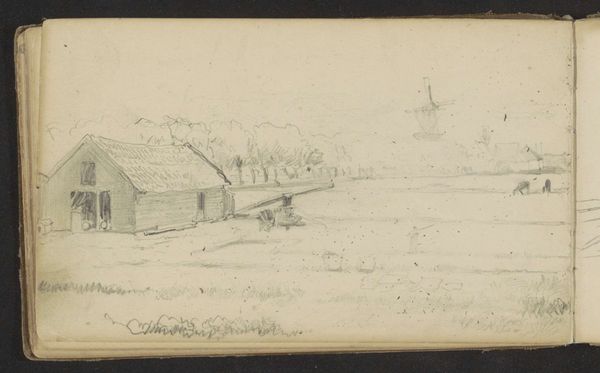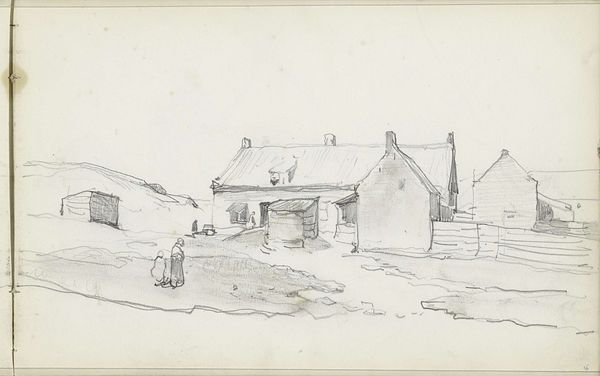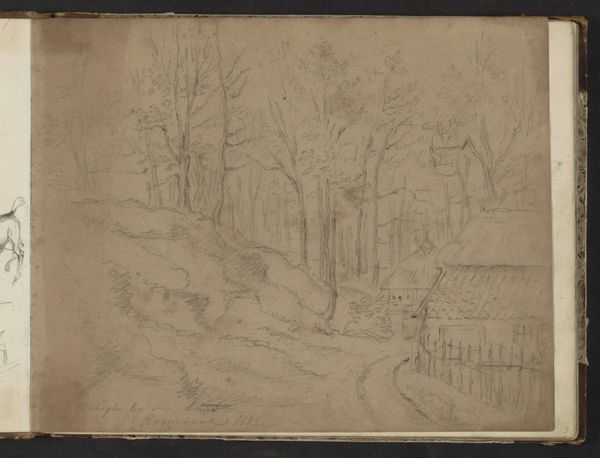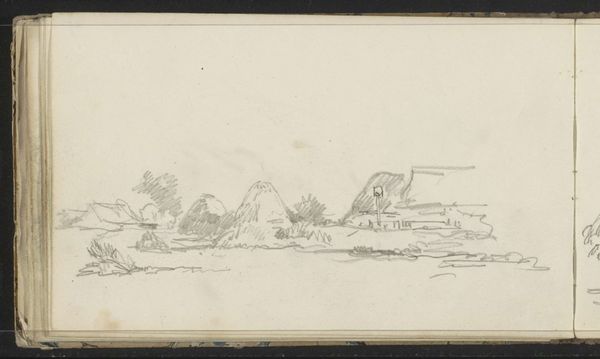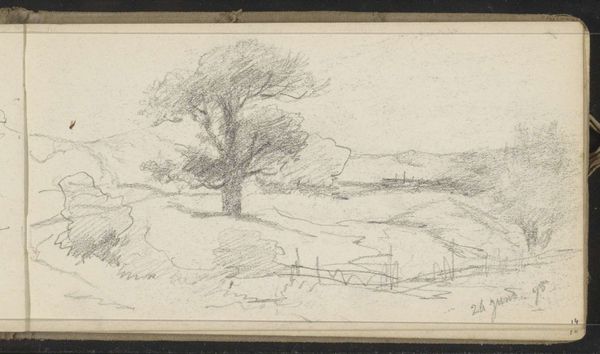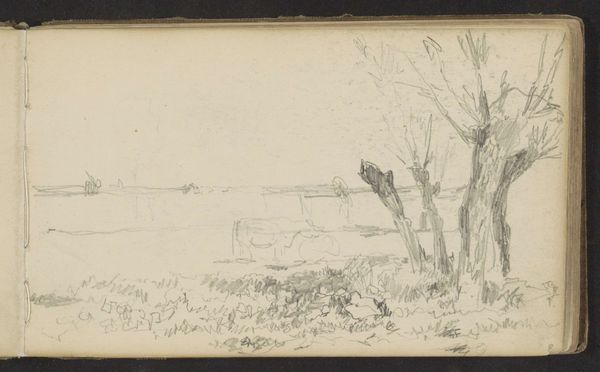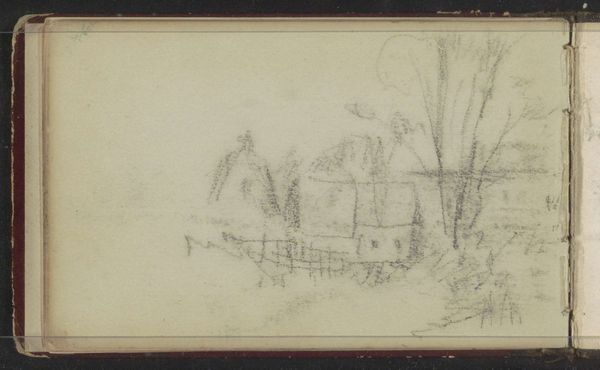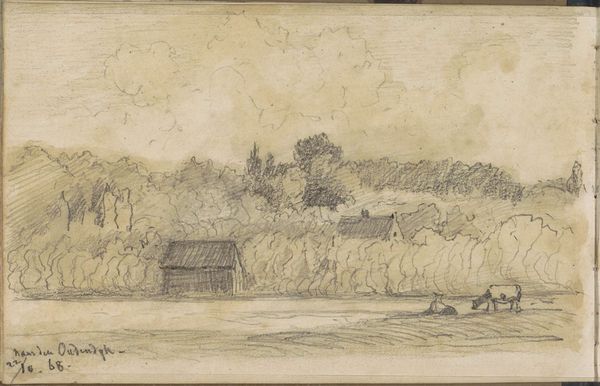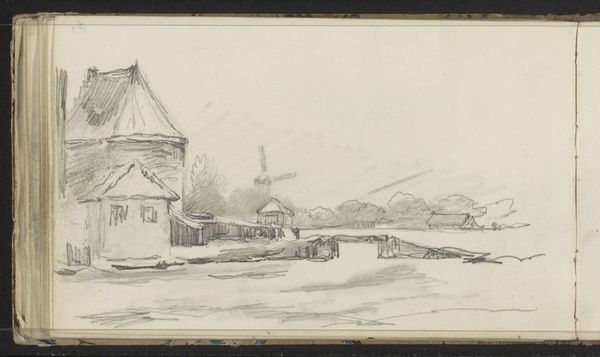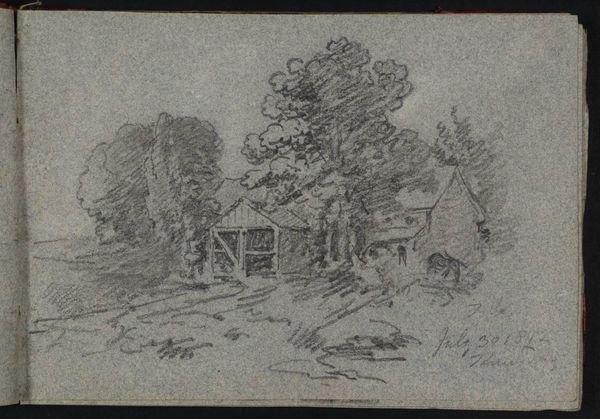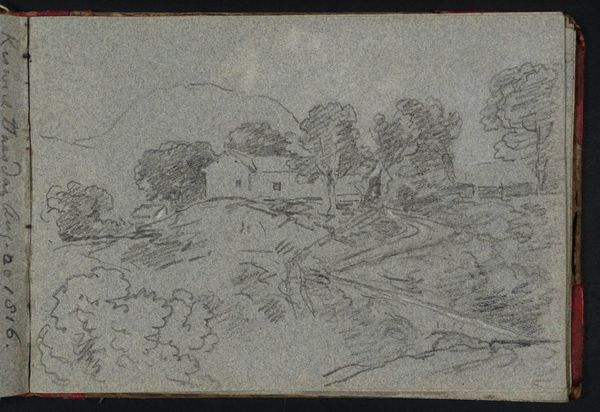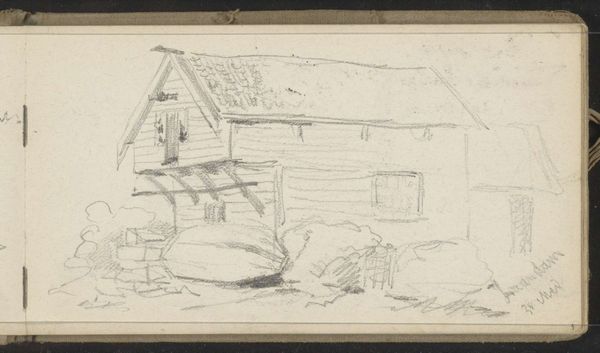
drawing, pencil
#
drawing
#
impressionism
#
landscape
#
pencil
#
watercolor
#
realism
Copyright: Rijks Museum: Open Domain
Editor: Here we have "Boerenwoning aan een vaart," or "Farmhouse on a Canal," a pencil drawing created sometime between 1834 and 1903 by Johan Hendrik Weissenbruch. The sketch feels quite simple, but there's an undeniable tranquility to the scene. What formal elements strike you as most important? Curator: Immediately, the linear quality defines this drawing. Consider the stark contrast between the clearly defined farmhouse and the looser rendering of the landscape, or between foreground and background. What might such distinction signify? Note also how the diagonal lines, suggestive of the canal banks, create depth. Editor: The drawing seems unfinished, almost like a preparatory sketch for a larger work. Does this suggest that the sketch itself is not intended as a work of art? Curator: The "finish" of the piece is interesting; it brings out its inherent qualities of line and composition more prominently. Consider how the deliberate placement of the farmhouse, slightly off-center, affects our perception. Would a more balanced composition alter its impact? Editor: Yes, it probably would. By unbalancing the composition and omitting information, he focuses our attention on particular lines and shapes, doesn’t he? Curator: Precisely. Further analysis could explore the function of line, the weight given to the various elements, and, naturally, its place within the larger scope of art-making itself. Editor: Thanks for walking me through the formal elements! It makes me appreciate that an "unfinished" artwork can make you consider different aesthetic elements and think about a familiar subject in new ways. Curator: It's a great pleasure!
Comments
No comments
Be the first to comment and join the conversation on the ultimate creative platform.
